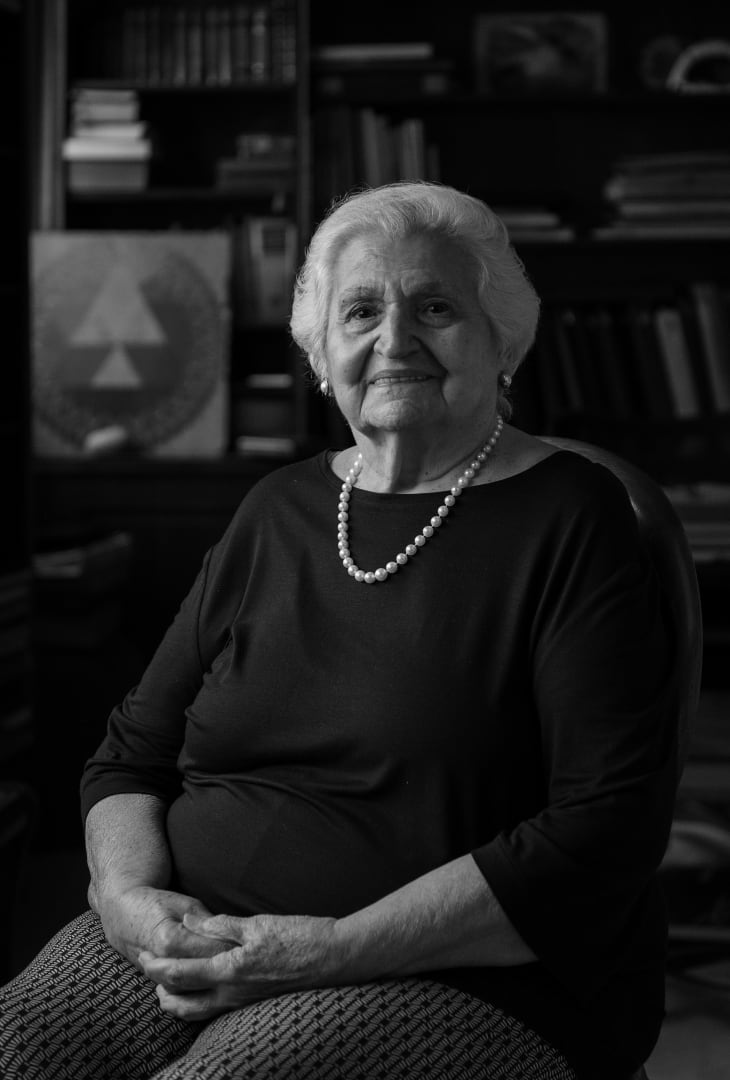Lives and works in São Paulo, São Paulo, Brazil
Born in Getulina, in 1931, at the age of twelve Habuba Farah Riccetti already revealed her artistic vocation during painting classes in the neighboring city of Lins. Daughter of Lebanese parents, she graduated as a secondary school geography teacher and taught for eight years at the Oswaldo Cruz State Gymnasium before turning fully to art. It was in the 1950s, when she visited São Paulo regularly to study painting, that she found the formal vocabulary through which she presented her pictorial nature of abstract and geometric tendencies, forms and strokes that the artist affirms have been present in her imagination since the beginning. Between 1952 and 1954, she studied painting at the studio of the Romanian artist Samson Flexor (1907- 1971). Later, she also studied drawing with Mario Zanini (1907-1971).
In 1958, based on the color theories of Michel Eugène Chevreul (1786-1889) - who obtained twenty thousand nuances by mixing the primary colors to obtain the secondary colors and lightening them with white and darkening them with black - she started her research entitled Neutros da Teoria da Cor [Neutrals of Color Theory], which she continued until 1963. In her research, she obtained subtle gradations of tones and semitones that went from brightness to darkness, from cold to warm, and re-established the relationship between line and representation. In 1965, she began producing cut-outs works, a technique she researched tirelessly until 1971. The 1970s also marked the beginning of an exchange of correspondence between Habuba and Victor Vasarely (1906-1997), who found points of rapprochement between their works.
Between 1972 and 1976, she was a full member of the IAG - International Arts Guild, which, according to its statutes, made it possible to set up a Brazilian Committee. During the same period, she also worked as a correspondent for the International Art Bulletin. In 1975, the artist became a member of the Associação Paulista de Belas Artes and had works exhibited at the Galeria D'Art Guelfa di Marcello Pieraccini and the Galeria Inquadrature in Florence, the Galeria Fiamma Vigo in Rome and the Galeria Nùmero in Venice, Italy.
Over a career spanning more than 70 years, she has taken part in several Art Salons in Brazil, France, Italy, the United States and Japan. In 2021, her work was exhibited in Acervo em Transformação: doações recentes at the Museu de Arte de São Paulo Assis Chateaubriand - MASP. The following year, she took part in Mapa das Mulheres, at Galeria MaPa, São Paulo, Brazil. Over 90 years old, Habuba Farah continues to produce works that synthesize line and light; movement and atmosphere; poetry and a geometric formal vocabulary.
In 2023, Gomide&Co held Habuba Farah, the artist's first solo show in over 30 years. On the occasion of the exhibition, her first monograph of the same name was released in partnership with Galeria MaPa. In 2024, her work took part in the group show Beyond Form: Lines of Abstraction, 1950-1970, at Turner Contemporary in Margate, UK. In 2025, she had a solo show at Jeremy Scholar in London, entitled Vibrations.
